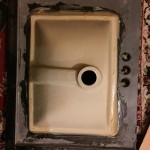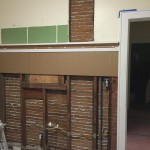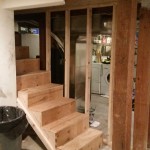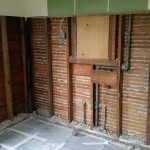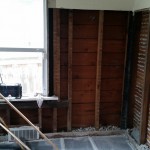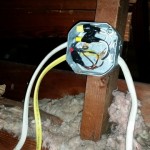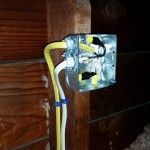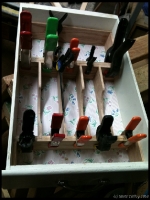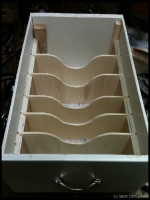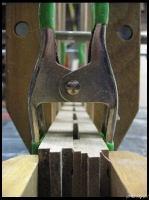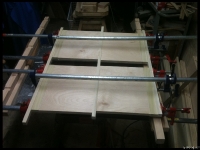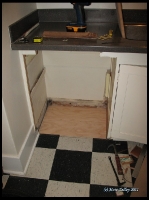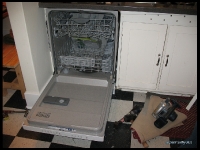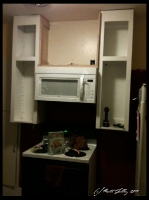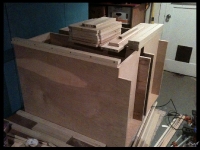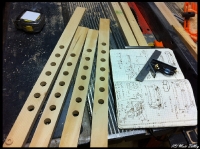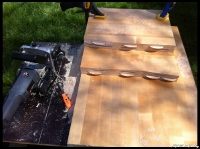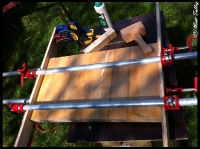I have remodeled 3 homes while living in them and am the son, grandson, brother-in-law, and step-son of contractors. I once had my own general carpentry company and served as a subcontractor for a few small to medium sized home-builders. I have had some great experiences working both professionally and personally with contractors and subs and I have had & seen all the possible home renovation horrors. The advice written below comes from the experience noted above.
Once you have decided on the work to be done and your ability to pay for said work, get written itemized estimates from several firms. Don’t automatically choose the lowest bidder or throw out the highest. Carefully consider how and why they are the lowest or highest bidders. Does the lowest have lower overhead cost or are they missing something important to the job? Does the high bidder know something that the others don’t or does he have a bright shiny new truck to pay for? Never, never, EVER do business with friends, family, or neighbors. Seriously. The “deal” you are getting WILL NOT be worth the hard feelings at the end. Ignore at you own peril….
Some Questions to ask while you are gathering bids:
- How many projects like mine have you completed in the last year?
- Ask for a list so you can see how familiar the contractor is with your type of project.
- Will my project require a permit?
- If so, will you be taking care of the Permitting process?
- If no, why not?
- Does the contractor have any BBB, State Licensing Board, or labor relations board findings?
- Call and check.
- Use the online tools and forums. Even if there is only one negative review. Read it.
- Will you be arranging both permits and inspections?
- A good contractor will get all the necessary permits before starting work on your project.
- Ask for copies of the permits and keep them handy/post on the job site.
- May I have a list of references?
- Any contractor should be able to give you names, addresses, and phone numbers of at least three clients with projects like yours.
- CALL THEM ALL!
- Ask each reference:
- How long ago the project was and whether it was completed on time?
- Were there any unexpected costs?
- Did workers show up on time and clean up after finishing the job?
- Is there anything that you would do different?
- Tell the contractor that you will be visiting the job-site, and will that be an issue?
- The answer should be: “No, you are welcome any time.”
- What types of insurance does the contractor carry?
- Answers should be:
- Personal liability
- Worker’s compensation
- Property damage coverage
- Ask for copies of insurance certificates, and make sure they’re current, or you could be held liable for any injuries and damages that occur during the project.
- Make sure there is an indemnity clause in your contract to relieves you of any liability in the case of injury or damage cause by or to a contractor’s employee or sub-contractor.
- Will you be using subcontractors on this project?
- If so, make sure to state in the contract that the subcontractors have to have current insurance coverage and licenses, if required.
- Will you be paying the subcontractor directly or will they be billing separately?
- Is there a fee added for their service fee by the contractor?
- Answers should be:
Payment Terms:
- Don’t pay cash, don’t pay cash… If a contractor will give you a “better deal” for paying cash, then walk away and go with another contractor.
- If they are willing to not declare income on their taxes, then they are willing to take other shortcuts on your job.
- Limit your down payment to 10-20% of the job cost. Some contractors will want the cost of materials and the 1st week’s labor upfront and that is fine as well.
- Make payments during the project contingent upon completion of defined amounts of work and not on calendar days.
- Example: ½ of project due when roof doors, windows installed and inspection passed. Final Payment due 7 days after final inspection pass and “punch list” items agreed to.
- This way, if the work isn’t going according to schedule, the payments to your contractor also are delayed.
Get a Written Contract:
It should be clear and concise and include the who, what, where, when, and cost of your project with very limited legal language flourish. Before you sign a contract, make sure it includes:
- The contractor’s business name, given address, phone, and state license number
- The payment schedule for the contractor, subcontractors, and suppliers
- The contractor’s obligation to get all necessary permits
- An estimated start and completion date
- Possible monetary penalty for (none weather related) missed dates: $50 off the total amount owed for missed milestone date due to say inspection failure and $50 for each day until Passed Inspection
- The payment schedule for the contractor, subcontractors, and suppliers
- A fully defined Scope of Work (SOW), which detail all work to be performed at a Time & Material rate or as a total bid cost.
- If work to be performed is on a Time & Material basis, then a weekly summation of all costs (labor, material, permits, etc.) and debits (payments or credits) shall be provided to the customer.
- A “Not to Exceed” amount or percentage for the job, say 5-10% of total unless due to noted and signed change orders previously outlining the expense.
- How change orders are handled.
-
- A change order is a written authorization to the contractor to make a change or an addition to the work described in the original contract. It could affect the project’s cost and schedule and that needs to be outlined in the written change order.
- A detailed list of all materials including each product’s color, model, size, and brand. If some materials will be chosen later, the contract should say who’s responsible for choosing each item and how much money is budgeted for it (this is also known as the “allowance”).
- Information about warranties covering materials and workmanship, with names and addresses of who is honoring them — the contractor, distributor, or manufacturer. The length of the warranty period and any limitations also should be spelled out.
- The inclusion of a lien release or lien waiver. See below.
- Notification time if Sewer, Water, Gas, Electrical services will be interrupted, normally 24 hours, and how long they will be off.
- Damage to Property: Negligent damage to property by contractor or subcontractors
-
- “Shall be repaired to previous condition at contractor’s expense.”
- What the contractor will and won’t do. For example, is site clean-up and trash hauling included in the price? Ask for a “broom clause” that makes the contractor responsible for all clean-up work, including spills and stains.
- You will want a broom clause. Trust me.
- Do not sign an Arbitration clause. This is for the sole benefit of limiting the contractor’s cost if things go wrong and if you report the contractor to a state labor board or a BBB in your state, this can be seen as a violation of this clause and the contract as a whole.
- Make sure there is a General Survival Clause:
- In the event any clause or provision of this contract shall be held to be invalid, then the remaining clauses and provisions shall never the less be and remain in full force and effect.
- A written statement of your right to cancel the contract within three business days if you signed it in your home or at a location other than the Contractor’s permanent place of business.
After You Hire a Contractor:
Keep Records!
Keep all paperwork related to your project in one place. If it didn’t happen on paper, then it didn’t happen. This includes:
- Speak directly to your contractor or your assign representative. Not the plumber, framer, or roofer.
- Copies of the signed contract
- Change orders
- Copies of all permits
- Follow up any in person conversations or phone calls with an e-mail detailing any agreed to points.
- Any correspondence with your contractor.
- Print out and keep e-mails for ready reference
- Keep all receipts of any material that you have purchased
-
- A record of all your purchases may be need receipts for tax purposes.
- Keep a log or journal of all phone calls, conversations, and activities. You also might want to take photographs as the job progresses. These records are especially important if you have problems with your project — during or after construction. And serves as a record for future construction or remodeling.
Once the job is “Done”:
Don’t make the final payment or sign an affidavit of final release until you’re satisfied
Besides being satisfied with the work, you also need to know that subcontractors and suppliers have been paid. Laws in your state might allow them to file a mechanic’s lien against your home to satisfy their unpaid bills to the contractor that used them on your job. Protect yourself by asking the contractor to secure a lien release or lien waiver from every subcontractor and supplier before final payment is made.
Know when you can withhold payment
If you have a problem with merchandise or services charged to a credit card, and you’ve made a good faith effort to work out the problem with the seller, you have the right to contact your credit card company and withhold payment from the card issuer for the merchandise or services. You can withhold payment up to the amount of credit outstanding for the purchase, plus any finance or related charges.
Before you sign off and make the final payment, check that:
- All work meets the standards spelled out in the contract
- You have written warranties for materials and workmanship
- You have proof that all subcontractors and suppliers have been paid
- The job site has been cleaned up and cleared of excess materials, tools, and equipment
- You have inspected and approved the completed work
- Use a Sign-Off Checklist/”Punch List”




